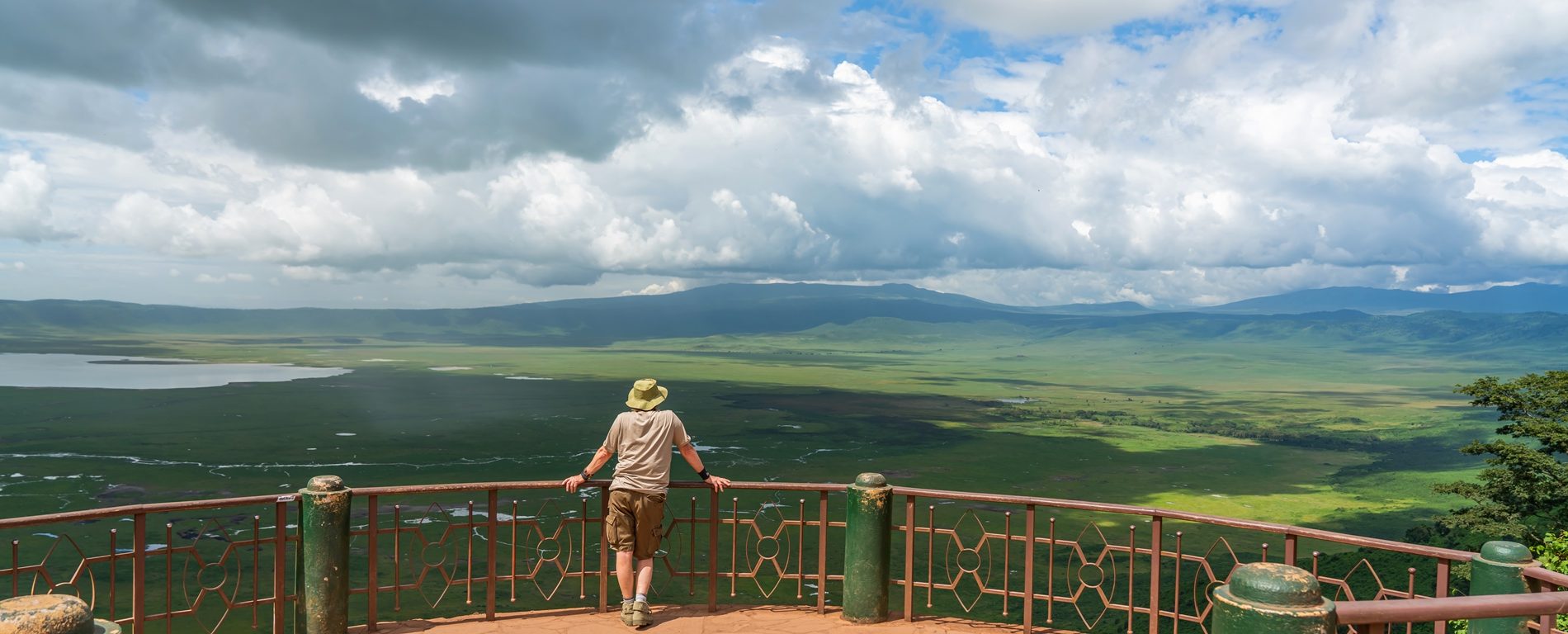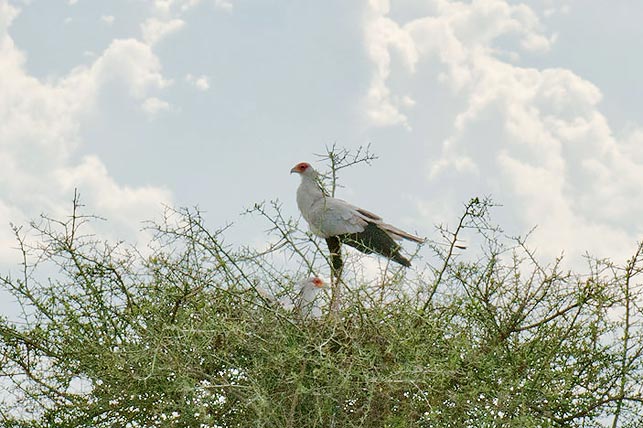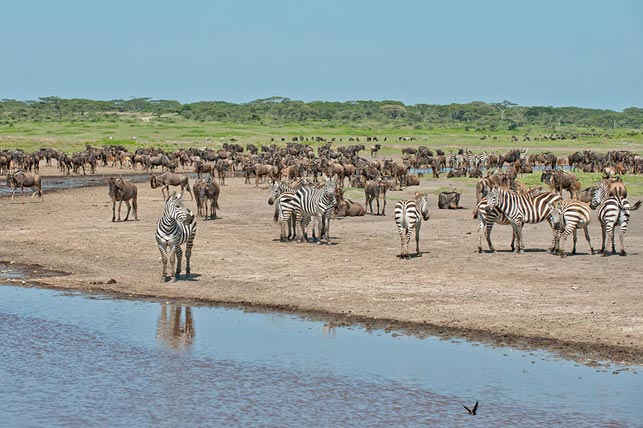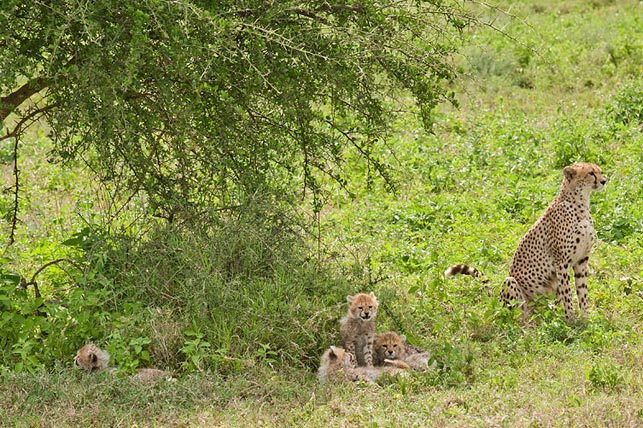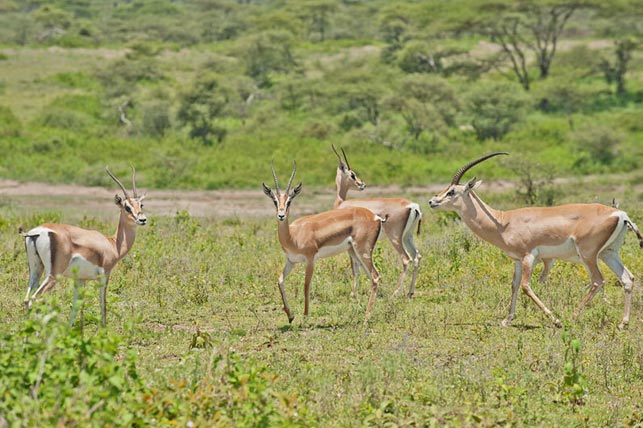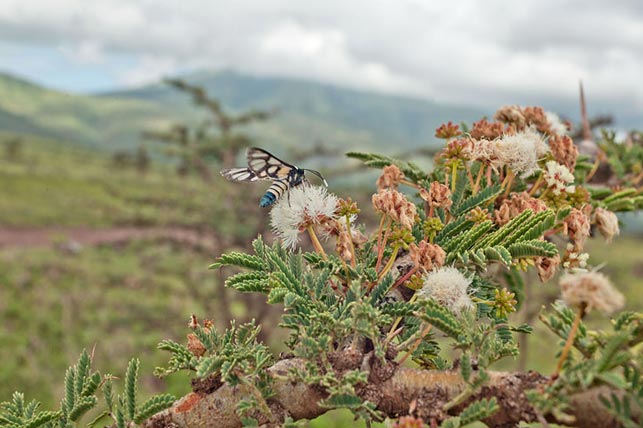Bordering the Serengeti to the east the Ngorongoro Conservation Area spans vast expanses of terrific highland plains, savanna, savanna woodlands and montane forests. Established as a special refuge and multiple land use area for the semi-nomadic Maasai people in 1959 – unique in the world until today – it also includes extinct volcanoes, amazing waterfalls, large swamps, and pristine jungle. Ngorongoro Crater is the stunning highlight of the Area and recognized as one of the Seven Natural Wonders of Africa. Based on fossil evidence found at the Olduvai Gorge, the very first hominid species occupied the area already 3 million years ago.
The Crater Highlands are the predominant landscape of the Ngorongoro Conservation Area and rise 3,300 ft (1.000 m) from the plains of the eastern Serengeti. Aside from the main tourist attractions and due to a low presence of wildlife the Crater Highlands are a real insider tip for nature lovers. The pristine high plateau ranks among the most terrific natural environments in Africa. It offers plenty of amazing trekking and hiking opportunities free from the restrictions of the National Parks and includes some of the continent’s highest summits to attempt. The Highlands feature a moderate climate due to a higher altitude. The magical Northern Highland Forest Reserve extends in a wide band along the outer, southern and eastern slopes towards the Rift Valley and is home to elephants, buffalo, and the leopard along with plenty of birds.
Besides the stunning wildlife inside the Ngorongoro Crater also the southern and western parts of the Ngorongoro Conservation Area also feature a great variety of East African wildlife. The gorgeous Ndutu Lake area at the border to the Serengeti has particularly strong cheetah and lion populations. Very common in the NCA are hartebeest, spotted hyenas, and jackals. The beautiful African Wild Dog is unfortunately a vanishing species. Servals are widely found on the open plains to the west of the Ngorongoro Crater. Usually between November and March the Serengeti´s annual migration passes through the plains of the NCA. The migration movement changes seasonally with the rains, but the migration traverses almost the entire plains in search of food.
Olduvai Gorge is a steep-sided ravine in the Great Rift Valley and belongs to the most important prehistoric sites in the world. It is considered to be the seat of humanity after the sensational discovery of the earliest known specimens by the British scientists Mary and Louis Leakey in the 1950s. Early human traces date from approximately 1.9 million years ago. Human evidence is also shown in the production and use of stone tools, the practices of both scavenging and hunting and increasing social interaction and communal activity. The museum at Olduvai displays a variety of fossils including a cast of the 3.7 million year old hominid footprints.
For centuries the Maasai, a semi-nomadic people, have inhabited southern Kenya and northern Tanzania. They raise large herds of cattle, sheep and goats which they follow in search of new grazing grounds and water sources. Within the Ngorongoro Conservation Area about 56,000 Maasai live in perfect harmony with the East African fauna. Their herds graze the Savanna next to thousands of wildebeests, zebras and buffaloes. This respectful cooperation is considered to be a great example of a well-balanced coexistence of man and nature. Some Maasai tribes welcome visitors to their village to experience their rich culture, social traditions, and lifestyle.


